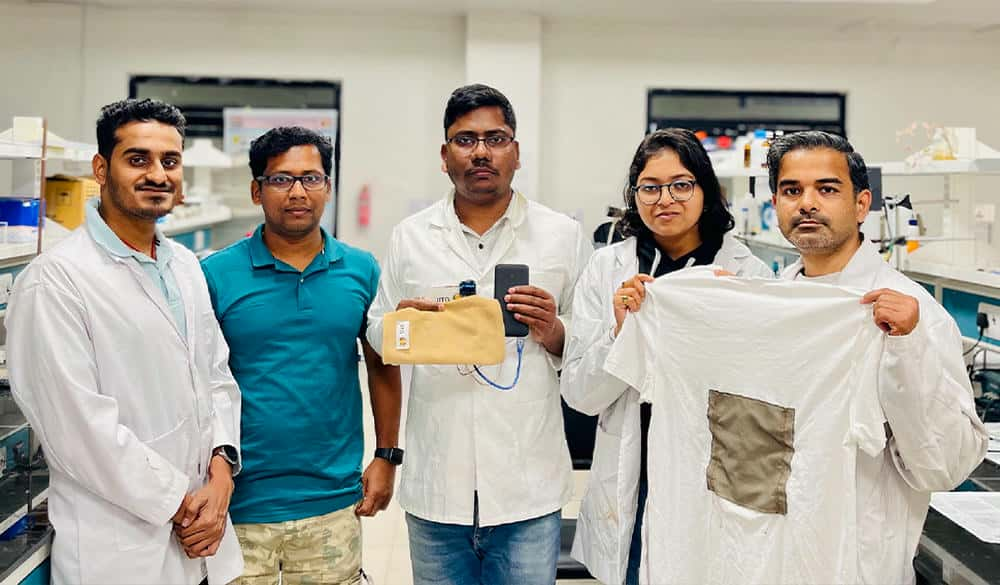IIT Guwahati develops self-cleaning, flexible heating fabric for extreme cold

Researchers at IIT Guwahati have developed an innovative self-cleaning, water-repellent, and flexible heating fabric designed to provide warmth in extreme cold conditions. This breakthrough textile, which can convert electricity and sunlight into heat, offers a lightweight and efficient alternative to traditional heating solutions, addressing health risks associated with prolonged exposure to low temperatures.
The research, published in the journal Nano-Micro-Small, was led by Prof. Uttam Manna (Department of Chemistry, IIT Guwahati) along with his team, including Debasmita Sarkar, Haydar Ali, Rajan Singh, Anirban Phukan, Chittaranjan Mishra, and Prof. Roy P. Paily (Department of Electronics and Electrical Engineering, IIT Guwahati).
Conventional methods to combat extreme cold, such as layered clothing and heaters, are often bulky, energy-intensive, or require constant power sources. While conductive textiles have emerged as an alternative, they often suffer from poor durability, high energy consumption, and vulnerability to water damage.
To overcome these challenges, IIT Guwahati researchers have developed a novel method by spraying ultra-thin silver nanowires onto cotton fabric, making it highly conductive while maintaining flexibility and softness. These nanowires, 100,000 times thinner than a human hair, allow electricity to flow efficiently, enabling rapid and uniform heat generation.
The fabric can convert electricity from a small rechargeable battery or solar energy into heat, maintaining a temperature range of 40°C to 60°C for over 10 hours.
Inspired by lotus leaves, the fabric is coated with a microscopic rough-textured layer that prevents oxidation, stains, and water damage, ensuring long-lasting performance even in wet conditions.
The anti-tarnish coating protects silver nanowires from degradation, maintaining high electrical conductivity over time.
The IIT Guwahati research team successfully tested the textile in wearable knee and elbow bands, demonstrating its effectiveness for cold-climate workers and military personnel requiring sustained warmth, arthritis patients needing localized heat therapy, on-demand water heating, accelerating chemical reactions by wrapping it around reaction vessels and path to Commercialization.
Speaking on the breakthrough, Prof. Uttam Manna stated, “Our textile is self-cleaning, breathable, and flexible, making it highly scalable for various applications requiring controlled heating.”
The research team has filed an Indian patent for the innovation and is now working on integrating it with miniaturized electronic circuits to develop viable consumer products. Industry collaborations are being sought to bring this revolutionary fabric to market, particularly for dry thermotherapy applications.




Leave a Reply